Identifying BT and Virgin Media’s Broadband Street Furniture 2020
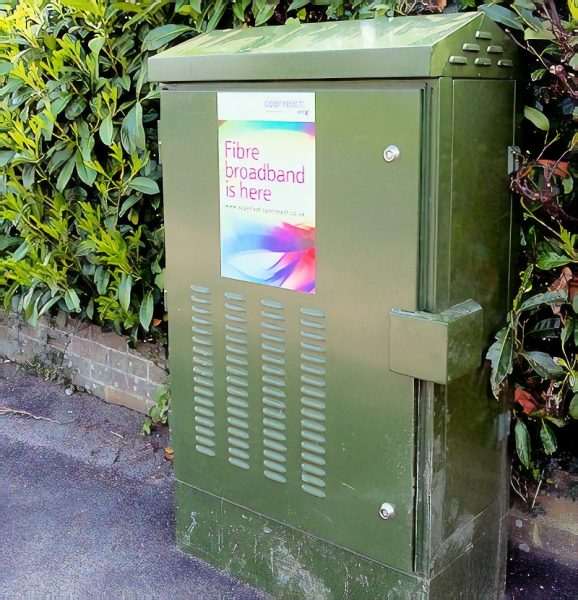
The national network operated by Openreach represents a complicated mix of many different technologies, although unlike Virgin Media nearly all of their street furniture is coloured green (often a darker green). The exception tends to be telegraph mounted FTTP equipment, which is often a generic black (the same for most operators).
We should point out that some of the cabinets below hark back to the pre-Openreach era when BT was a single network and company, although much of that has long since been replaced. We will add new kit to this page once good pictures are available.
Openreach’s Street Furniture
At present most of Openreach’s active street cabinets are either built by Huawei or ECI. As with Virgin, we don’t yet have pictures of their entire street infrastructure collection and have thus primarily focused upon the operator’s newer and more familiar kit.
Primary Cross-connection Point (PCP) Cabinet
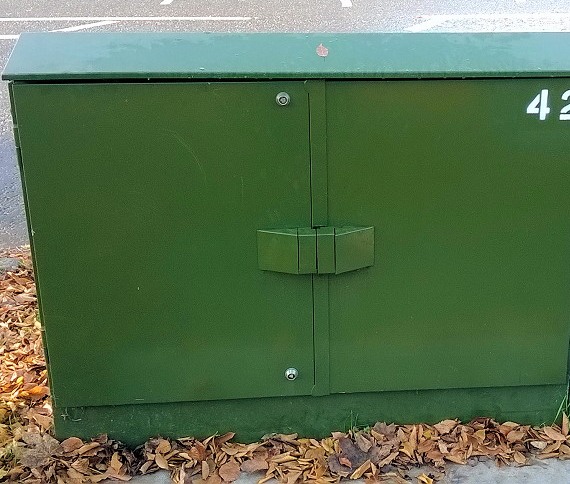
You’re probably most familiar with this cabinet as it’s the one that Openreach builds before they can add the newer DSLAMS for FTTC and G.fast broadband services. As per the name, it’s a primary distribution and aggregation point for their local network, although it use to only handle copper lines. Cabinets like this tend to manage 200-400 lines. Some also have smaller extension pods on the side (like the G.fast pods below, but often without vents or fewer vents – can be sat on the right and / or left side).
Huawei DSLAM FTTC 384HD or H288

Pictured is an upgraded version of their H200 series cabinet, which enables it to handle up to 384 ports for FTTC (VDSL2) based superfast broadband connections. Openreach introduced these in 2016 and in 2019 it became possible to upgrade them to handle 512 ports (we don’t have any good pictures of the latter).
Huawei All In One (AIO)

You’ll usually find these deployed in former Exchange Only Line (EOL) areas that have been upgraded via a complex network rearrangement. In short, AIO cabinets combine both the features of a PCP cabinet above with those of the usually smaller FTTC (VDSL2) based DSLAM cabinets (i.e. phone and hybrid fibre broadband inside a single unit). Most can support 500 phone and 128 FTTC lines.
Huawei G.fast Extension Pod (Side of PCP Cabinet)
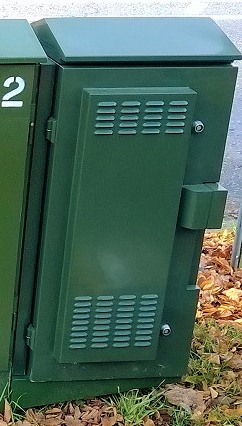
At present Openreach’s G.fast based ultrafast hybrid fibre broadband technology is predominantly being deployed as a side pod, which is optionally stuck on to the side of their aforementioned PCP cabinets. This approach gives it a slightly different copper line distance (to the home) consideration than FTTC (VDSL2) cabinets, which are usually built nearby.
Some older G.fast trials also built a small power pillar cabinet (NOT pictured) to support remote G.fast nodes on top of telegraph poles, which look very similar to this extension pod. The difference is that such power cabinets were independent, have a bold yellow warning of electric shock on the front and fewer vents.
Take note that you may see pods like this on other PCP cabinets, albeit without the vents. The lack of vents usually means it isn’t for G.fast and is more likely to just be extending the number of ports that the PCP cabinet can handle.
Huawei DSLAM FTTC Cabinet (128 Ports)

A smaller cabinet for FTTC hybrid fibre broadband services, which can handle between 96 and up to 128 ports. Obviously you’re more likely to see these around smaller communities or areas of low demand.
ECI DSLAM FTTC Cabinet (256 Ports)

Like the one above, this cabinet is another smaller one for FTTC hybrid fibre broadband services. The difference is that it uses hardware from ECI and can handle between 128 and up to 256 ports.
Wireless-to-the-Cabinet (WTTC) Pole / Mast

A few remote rural parts of the UK were connected up via Openreach’s niche WTTC service, which is similar to their hybrid fibre FTTC (VDSL2) broadband network except that in this setup the DSLAM cabinet is fed by a Microwave (radio) wireless link instead of fibre optic cable.
Customer Splice Points (CSP) / External Termination Box (ETB)
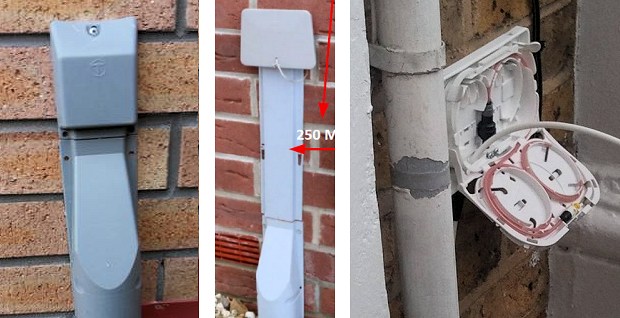
Generally this – also called a junction box – is the point where the copper or fibre optic cable comes up from the ground (assuming an underground duct deployment) and enters through the side of your property. The older boxy looking junction box is for copper lines.
Take note that there are usually no CSPs in brownfield FTTP architectures because the drop cables are indoor/outdoor cables. Likewise you won’t have one of these on all houses and obviously those fed by an overhead (telegraph pole) cable don’t need one. In copper installs the internal Master Socket will usually be nearby to this.
Older PCP Cabinets
BT (pre-Openreach) also had a number of now significantly older looking street cabinets, although you’re unlikely to see too many of these around today as most of them have long since been replaced or re-shelled with one of the more modern units above. Sadly we don’t have any good royalty free pictures of the smaller single door cabinet on the right.
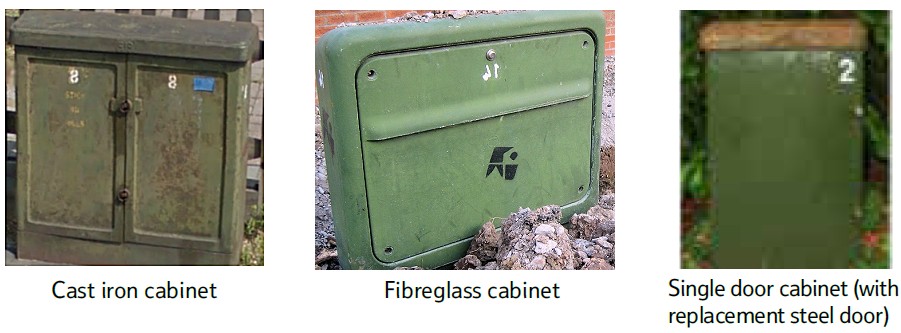

UPDATE 21st April 2020:
Thanks to one of our readers (Mark), we’ve been able to get a better picture of the GPO steel cabinet with its original door (shown in the lower res image above right). See the new picture immediately to the right of this text.
Fibre Nodes, Joints and Splitters (Underground or Pole Mounted)
Openreach’s fibre optic based local access network tends to use a mix of aggregation nodes, joints and splitters in order to bring the service to your door. Some of these (e.g. agg nodes) mostly sit underground in their own chamber and so you won’t see them, but a lot of others are pole mounted.
Some of the most common examples of all these can be found pictured below and sadly there are too many different types for us to bother identifying each, although they’re all quite similar. The odd one out is that black rectangular box with cylindrical nodules on top, which is a Connectorised Block Terminal (CBT). We’ve included some pictures of these units both with and without their covers.
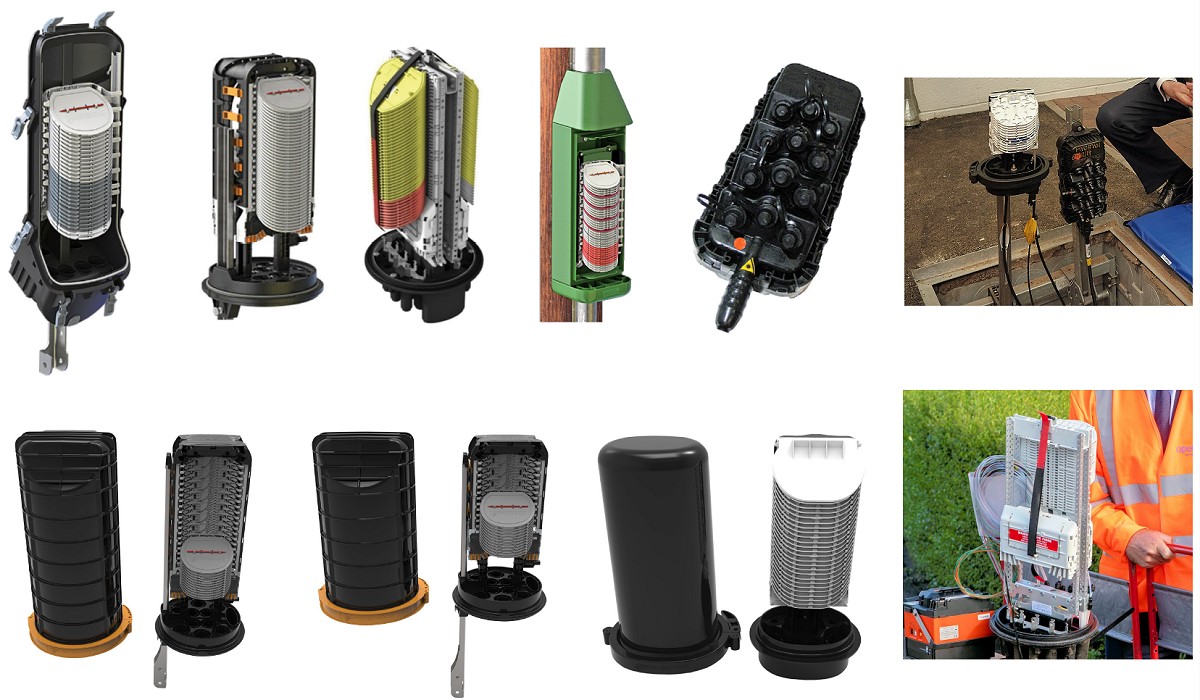
A Word About Manholes and Chambers
Granted at a certain age saying the word “manhole” might well have resulted in furious giggles from across the room but we older folk know better (ehumm..) and in this case we’re talking about underground chambers, which usually house all sorts of networking wonders; as well as the occasional horror.
The big problem with these is that from the surface they all look pretty generic and that’s because they have to conform to certain standards. On top of that some networks have changed hands so many times over the years, or share their infrastructure, that identifying who manages what from the central label can easily turn into an exercise in frustration.

A typical underground chamber will usually have several markings, sometimes around the edges and usually in the centre. You’ll probably see a generic heart shaped symbol (British Standard) and various British / European standard codes like EN124 or B125 etc. None of these tell you much about what’s below, they just identify the standard of lid/chamber and what kind of environment it’s intended for (road, pedestrian etc.).
However in the very centre there’s usually a network name and that can help you to identify who owns what. One of the most common examples is when you see a chamber lid with the CATV name in the middle, which usually reflects the existence of cable TV / broadband networks like Virgin Media or WightFibre (or Telewest, NTL and Smallworld Media before them).
Chambers and manholes come in all sorts of different shapes and sizes. As such the easiest solution is for us to try and list some of the common markings and associate them to primary networks (we probably won’t get all of them due to the complex history of different networks and ownerships).
Chamber/Lid Markings for Virgin Media
CATV (generic – can also be used by other cable TV / broadband operators)
CableTel
NTL
Croydon Cable
United Cable
United Artists
Birmingham Cable
CABLE LONDON
EUROBELL
TELEWEST
SMALLWORLD
VIRGIN MEDIAChamber/Lid Markings for Sky (Sky Broadband)
FIBREWAY
IPSARIS
EASYNET
SKYChamber/Lid Markings for Vodafone
SCOTTISH POWER TELECOM
SCOTTISH TELECOM
NORWEB
YOUR COMMUNICATIONS
thus
MERCURY
CABLE & WIRELESS
VODAFONEChamber/Lid Markings for BT / Openreach
BT
GPO
NTC
T (usually in a circle with top right of T in dots = Fibreglass Telecom)
PQ
POST OFFICE
NTCL (National Telephone Company Limited)
TELECOMChamber/Lid Markings for Zayo Group
186K
GEO
ZAYOChamber/Lid Markings for Century Link
Century Link
Level3
Global Crossing
FIBRENET
RACAL
TANET
British Rail Telecom (Pre 1995)
Take note that the murky area of infrastructure leasing adds some complication to the above picture. For example, Virgin Media appears to own its entire metro area network but they also seem to lease subduct/fibre for big chunks of their long distance links (possibly via CenturyLink). Likewise Sky is known to work with both British Waterways and CenturyLink.
Finally, we do not consider this to be an exhaustive list of all the bits and bobs that the above operators’ may install, not least since the technology is always changing and some aspects are hard to photograph. As such we may add more to this article over time and update accordingly.
Mark is a professional technology writer, IT consultant and computer engineer from Dorset (England), he also founded ISPreview in 1999 and enjoys analysing the latest telecoms and broadband developments. Find me on X (Twitter), Mastodon, Facebook and Linkedin.
« ISP County Broadband Sees Demand for Rural UK FTTH Network
Sky UK Delays Long Awaited HDR Video Update to Late 2020 »
Latest UK ISP News
- FTTP (5511)
- BT (3514)
- Politics (2535)
- Openreach (2296)
- Business (2260)
- Building Digital UK (2243)
- FTTC (2042)
- Mobile Broadband (1972)
- Statistics (1788)
- 4G (1663)
- Virgin Media (1619)
- Ofcom Regulation (1460)
- Fibre Optic (1393)
- Wireless Internet (1389)
- FTTH (1381)





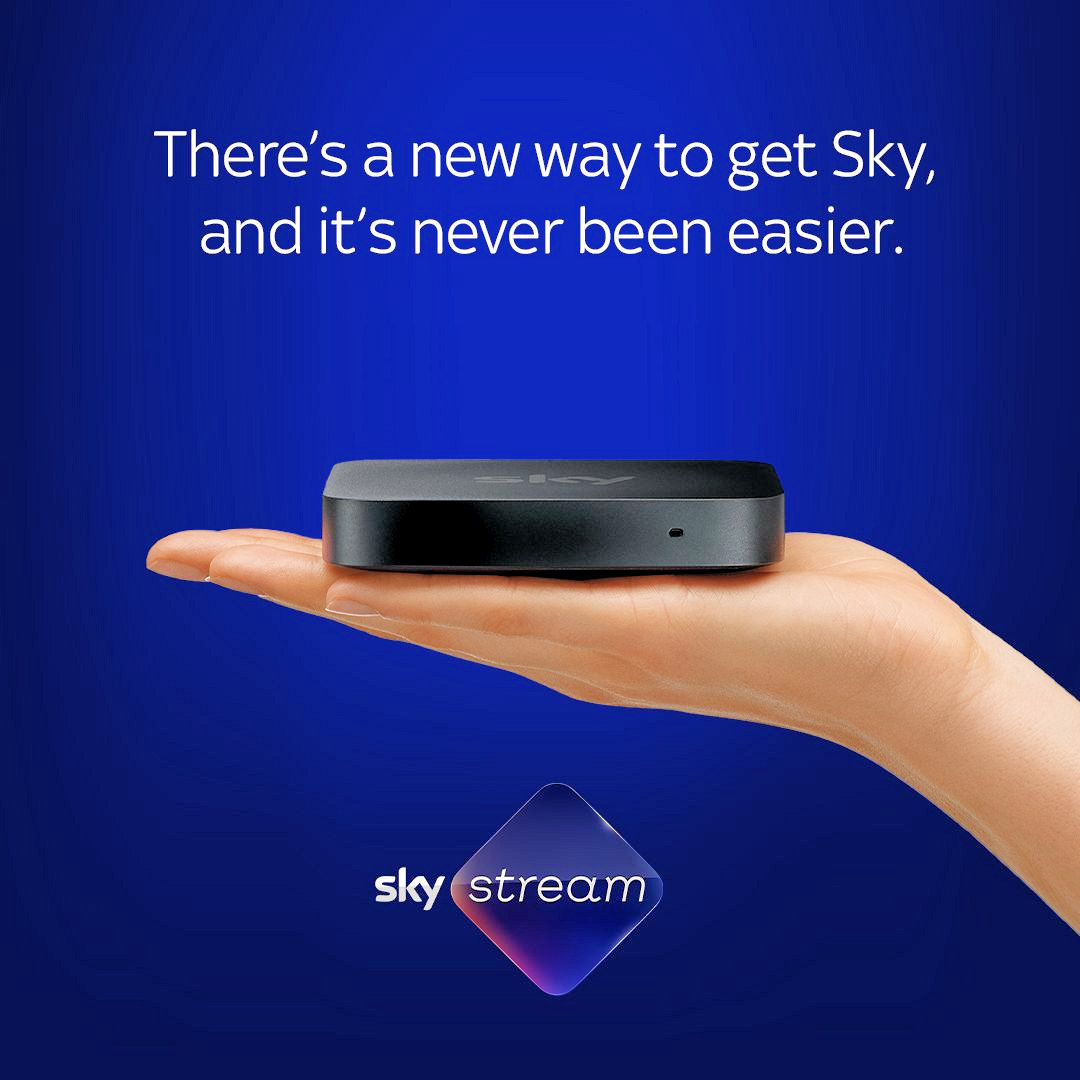


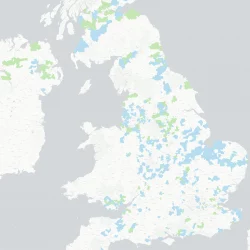

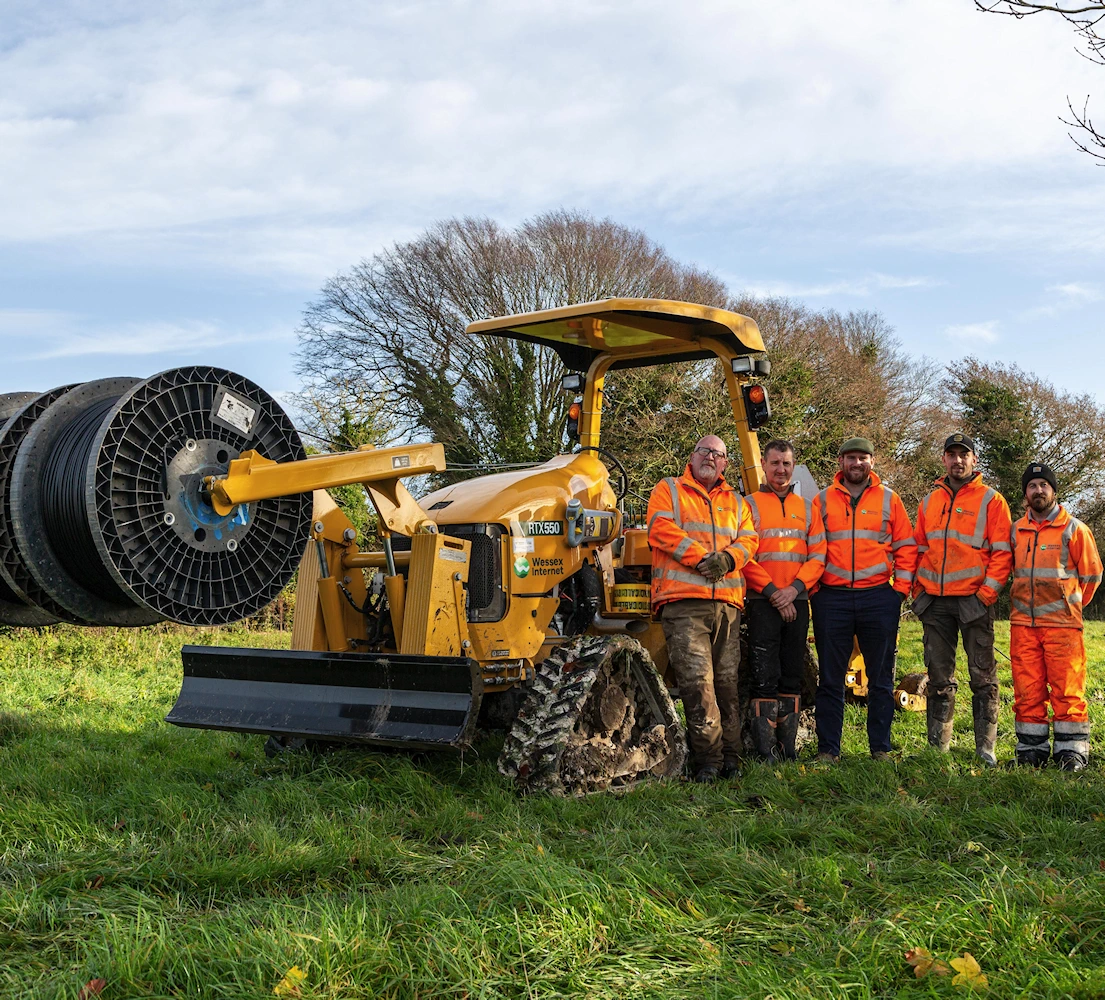
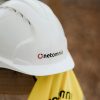









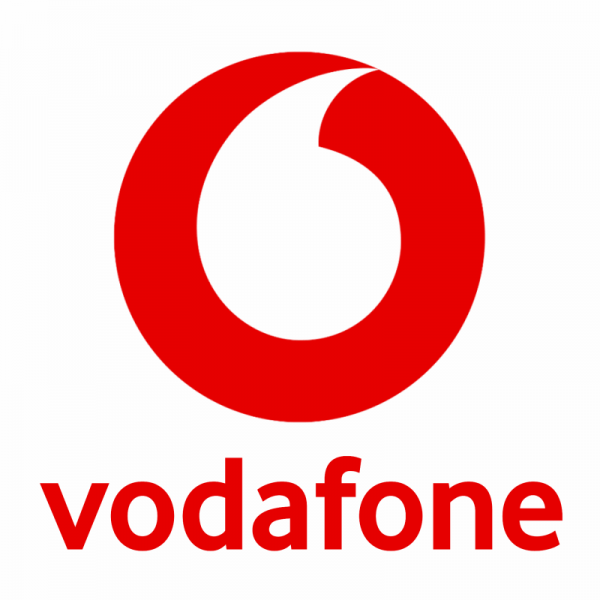
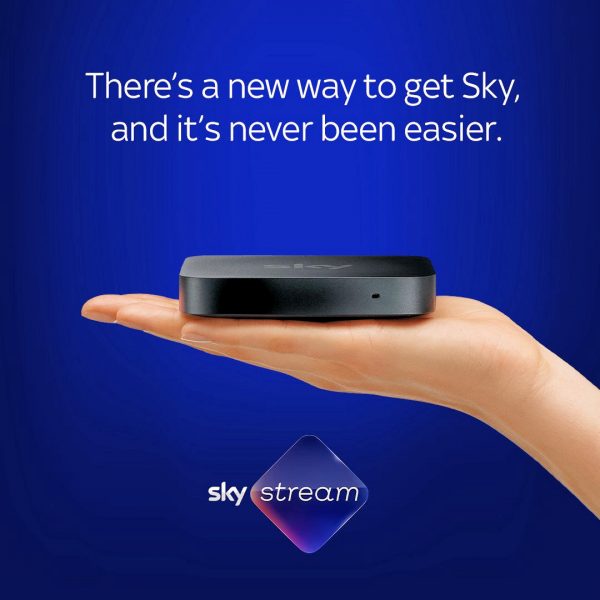

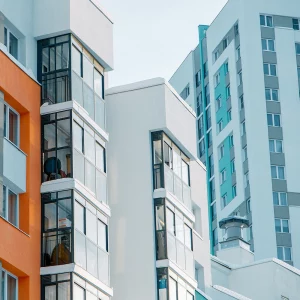
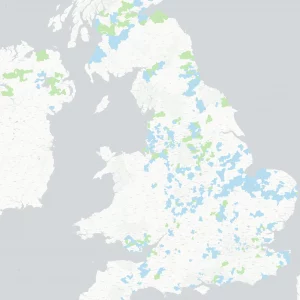



































I would add for Virgin lid markings: Redifussion who became croydon cable and C&W who morphed into NTL
Alex Comerford – Cable and Wireless became ntl which then became Virgin.
Yep C&W were in the cable TV game for a while, this ultimately became Virgin. Then there is the long haul and international part of C&W which was bought by Vodafone. (But not the Caribbean part which is now Liberty Global!)
Sky “work with British Waterways” because in 1994 Marconi built a fibre network along many canals called Fibreway, this was sold to Easynet which was then sold to Sky.
On CenturyLink (ex Level 3), Virgin and other large UK ISPs (apart from BT) use them and others for national network, either dark fibre or (most likely) lit wavelengths.
Redifussion… now there’s a blast from the past. The original UK cable tv service that only paid off for users who were in town but out of sight of a transmitter. Over 40yrs ago with the clicky box on the wall behind the tv. Ohh the good old days lol
Mike: if talking about large fibre networks in the UK don’t forget Zayo. SSE Telecoms, too.
handy video charting the evolution of some of those assets
UKNOF41 – The hitchhikers guide to ducts and poles, networks and 30 years of acquisitions
https://www.youtube.com/watch?v=8I3XxniJdh8&list=PLjzK5ZtLlc92flNU8n-m7A9BNBBNGtSMv
I’ve been unable to tarck down a photo of a Cambridge Cable cabinet which was plastic and I believe housed the optical node which served about 24 premises which could get up to 152Mbps.
Optical nodes would serve far more than 24 premises I would imagine.
Probably a small distribution cabinet. May even have been for other things than CATV.
There is a handy PDF located on the Openreach site which gives a lot of information about the various visible equipment that you will see. You can find it here:
https://www.openreach.com/content/dam/openreach/openreach-dam-files/images/network-services/locating-our-network/locating-our-network-documents/identifying_our_equipment_guide.pdf
Nice little guide Thanks Mark! 🙂
Bedford and Birmingham Virgin Media live going to visit somewhere??
I think Virgin Media anywhere live big high look they. When next year dates will May, June, July and August 2020 new locked doors re-changed. ???
Reset the spam bot!
Good old Virginia media even with all there upgrades to there Internet systems they still suck at been secure, As free Internet is so easy and I wish vm would sort this out as I do not condone theft of service but tonight u did do a pentest on there network and still to this day you can see all the peoples data in your local data without much hack the modems Mac can be sniffed and it gained from here I was able to issue a command which gave me the cert for any modem using vm’s tftp server and rerouting the cert data to my test server then I flashed a diffrent modem with firmware which is similar to what the cable company’s use to test the network and copied over the details I sniffed from my area to the new now cloned modem Mac,serial,cert and spoofed some other data is. Serial and sw so ir would match the organisation modem and will free cable Internet, com on Virginia it’s 2020 in a few days pls fix your network if you need help msg me lol
Reset the grammar bot!
This is a quandry.
1) This would require an awful lot of cock ups to be possible.
2) There is a fair amount missing from this recipe.
3) It would be a bad idea for me to start filling in blanks.
I’m very dubious but you can’t be too careful. Management at VM made aware of this claim.
Few things:
The SD1 and 1i are different cabinets. The i is used in FTTP areas only and may be a power pedestal for the VHUB and is a little deeper.
DD1 and 2 are larger than 3. 3i is the same chassis as DD3 but being used in an FTTP area.
The EV cabinet isn’t designated as an HP1.
There is another cabinet that’s not being built anymore, an MSAN cabinet holding exactly that – an MSAN, which old school POTS services connect through. These are usually collocated with an DD/HP 2 which provides power, it holds UPS and batteries, and is doing HFC nodal duties.
The VHUB also holds a big hunk of mains powered kit. These are OLTs, the same kind of thing FTTC cabinets connect to and Openreach FTTP customers have at the other end of their fibre.
Openreach and CityFibre are the major only operators I can think of not having OLTs in the field.
So… these are solely Virgin cabinets outside our house then. I’ve always assumed they housed both Virgin and BT equipment.
i.imgur.com/vvSOj2P.jpg
One of those cabinets for sure serves our house (we lose connection occasionally when a Virgin engineer is working there).
Total noob question;
What are the benefits of living this close to the cabinet? Are we less likely to be affected by peak congestion and other issues that might affect households further from the cabinet?
We’ve always had the advertised speed at all times, tested on various speed tests.
Cheers.
Virgin chamber covers in Manchester and Derby have Nynex on them and in Nottingham they have Diamond Cable.
Living closer to the cabinet makes no difference to your service on VM.
Nor does it improve the frequency of price increases, which coincidentally seem move inversely to Virgins reliability.
This is really an amazing article to follow. I went through it and got a lot of knowledge from it. I will definitely come back to this and also I will recommend my friends to go through this article. This article tells about identifying BT and virgin media’s at UK broadband street furniture. Thanks a lot.
Virgin box it street has gone all rusted and the front has caved in how to I get someone to come and check it please.
I will try once more the virgin green box in my street is all rusted the front has caved it how can I get someone out to fix it